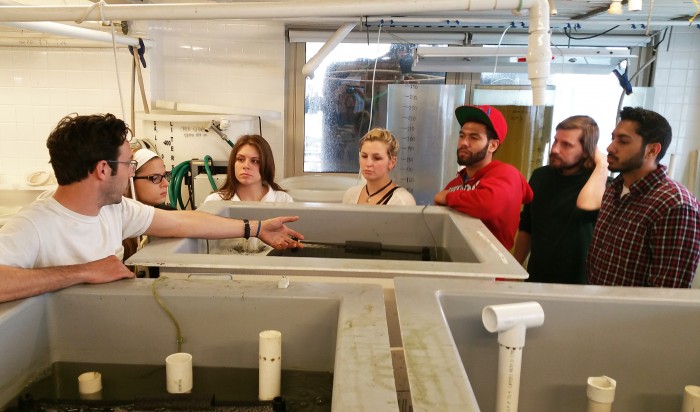I spent the last hour transfixed by deep sea footage at the YouTube channel of the National Oceanographic and Atmospheric Administration’s Ship Okeanos Explorer. It is worth a leisurely visit. The first video presented below is from an expedition exploring Puerto Rico’s seamounts, trenches, and troughs, shot at a depth of 2100 meters, or 6,890 feet. The second is a short but extraordinary video of a sea cucumber “in flight.” For best viewing, use the full-screen option.
From NOAA’s Ocean Facts webpage:
Found only in salt water, more than a thousand species of sea cucumbers exist around the world. These squishy invertebrates are echinoderms, making them distant relatives to starfish and urchins. Unlike starfish or sea urchins, the bodies of sea cucumbers are covered with soft, leathery skin instead of hard spines.
If you ever encounter a sea cuke and he feels threatened, you could be in for a surprise. Some sea cucumbers shoot sticky threads at their enemies, entangling and confusing predators. Others can violently contract their muscles and shoot some of their internal organs out of their rear ends. The missing body parts are quickly regenerated.
Most sea cucumbers are scavengers, moving along the seafloor and feeding on tiny particles of algae or microscopic marine animals collected with tube feet that surround their mouths. The particles they grind down to smaller pieces are further broken down by bacteria and become part of the ocean’s nutrient cycle. This is a similar role to that which earthworms perform on land.
Sea cucumbers are enjoyed as meals for other critters such as fish and crabs. In some places, especially Asia, sea cucumbers are considered a delicacy and are enjoyed by humans.
Sea cukes are certainly a little odd, and definitely not something you’d ever find in your garden.
More NOAA links:
NOAA’s Okeanos Explorer webpage
NOAA’s Ocean Explorer YouTube channel









